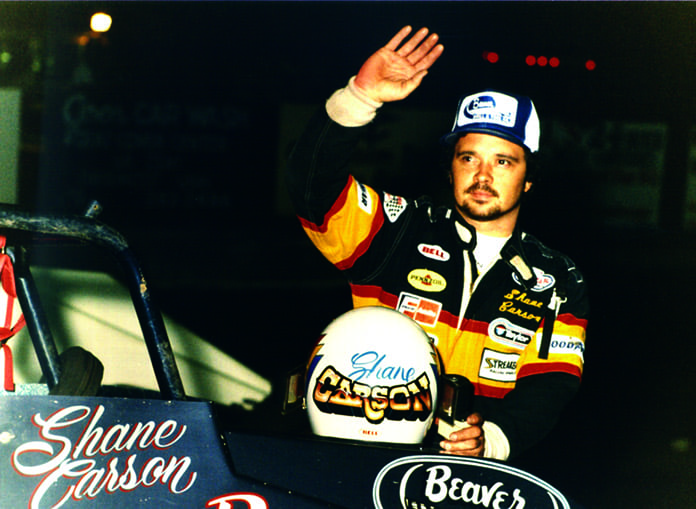
While he admired his heroes, Carson got a degree in racing by competing against sprint car racing’s big three — Steve Kinser, Sammy Swindell and Doug Wolfgang.
“Over the years, I learned a lot from watching those guys, all three of them,” recalled Carson. “I didn’t think they were impossible to beat because we did it at times, but day in and day out, Steve Kinser was the man you had to beat.
“Nobody was more passionate about racing and preparation than Doug Wolfgang,” Carson noted. “He was in shape and thought that gave him an advantage, and it drove him nuts when Steve beat him. And I’d say Sammy was and is the best on the engineering side. He could design and build a car, then race it too.
“I was really proud of the times I beat them,” Carson continued. “I won the $10,000-to-win finale at Eldora in the Nichols Brothers No. 31 the first time I saw the car. That was at a time when Knoxville was still paying four grand for the Nationals. Danny Smith warned me that the car might not be very good but said that sometimes it was really fast. Fortunately for me, it was a one-day show and that was the day.
“The next year we came back and won it again in the Vice Grip car and got 11 grand.”
Carson eventually had to pack away his fire suit and helmet and apply his racing skills in a different manner.
“In 2005, I took a position with the World of Outlaws,” he said. “The people who bought the series from Ted Johnson were from Oklahoma and I worked with them until 2010 as operations director. I helped with scheduling and rules, worked with the promoters and tried to get a handle on what sprint cars needed to look like 10 years down the road. They’d lost Ted’s expertise and while the new owners had passion, they were businessmen, not racers. The only racer in the bunch was Brian Carter, a racer who was all of a sudden running the biggest sanctioning body in short-track racing. I’m proud of what he’s done.
“Today, I’m involved with the Sprint Car Hall of Fame, doing promotions for them out on the road, and I work with a number of series: the World of Outlaws, USAC, and OCRS and SSO out in Oklahoma. I like to do everything I can to promote the sport.”
How does Carson see today’s racing?
“I feel like the big shows are getting bigger because they’re marketing them differently,” he explained. “It’s not getting a few guys to come in to pump up what’s basically a weekly show, it’s getting all the well-financed teams with their professional look in at once for a major event.
“Unfortunately, this may have run off some of the little guys, but sponsorship is good for the major teams and speedways. For example, I was blown away by Volusia this winter,” Carson noted. “It used to be 1,000 people watching racing on an oiled sand track, now it’s one of the nicest facilities in the country.
“That’s the future of the 410s as a traveling attraction. The 360s provide good racing too — engine size is not that important — and they can stand on their own,” Carson continued. “But I’m a 410 guy. We had a 430 Shaver all-aluminum engine we ran all of 1984 before they started making rules. That’s what makes today’s 410s special, they’re the fastest cars with the best-known drivers.
“And you don’t need 100 cars where you have to wait all night for the A. People start leaving before the A is run. A car count in the low to mid-30s is perfect when they’re all quality cars.”
Carson still hits major events and uses the February All-Star, Outlaws and USAC events in Florida to catch up with old friends. For a racer, that’s pretty much a perfect retirement.
